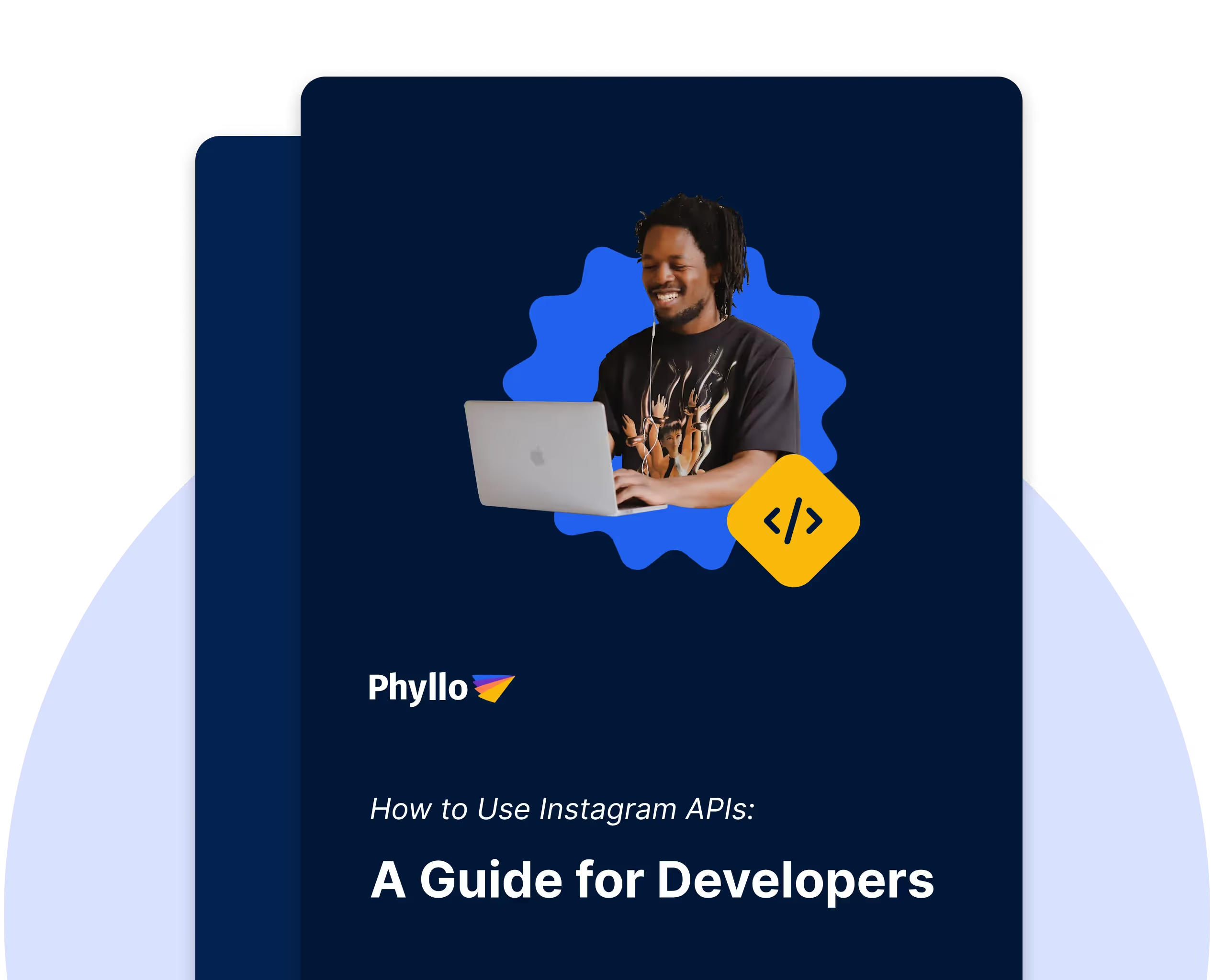“People will sit up and take notice of you. if you will sit up and take notice of what makes them sit up and take notice.” ~Harry Selfridge (Businessman, Earl of Oxford Street0
This popular quote playfully repeats a specific phrase so that it makes an intentional impact.
Before jumping into the second headings of this blog, let us give you a reason to read the whole thing with an example.
Barbie the Movie, in 2023, gave us a great social listening example with its influencer marketing-led approach to social media monitoring.
Before and after the movie was released, Barbie’s team had ears all over the internet, thanks to social media listening! Their team found that most trending memes were simply comparisons of fan-favorite Ken’s wardrobe choices and an outfit worn by the BTS star Jimin.

They took the opportunity to play on this fun comparison by getting lead actor Ryan Gosling involved and created a post acknowledging the great fan comparisons and copying some of Jimin’s famous moves.
Fans of Ryan Gosling, Barbie, and BTS loved this gesture!
This led to their best tweet engagement yet, with a total post lift of 744% and a whopping 149 million impressions on Instagram Reels.
That’s how you turn your audience into your advocates using Social Media Listening.
By the end of this article, you will learn about social media listening, customer advocacy and how to implement it, measure its impact, what challenges you will face, and tips to overcome those hurdles with ease.
Now, let’s dig in!
Understanding Social Media Listening
Are you familiar with the idiom- The Walls Have Ears?

Social Media Listening lets you eavesdrop on the conversations happening across different social media platforms, where people are talking about your brand, your products, and your competitors.
Imagine if you could listen to your users in real-time, hear their honest opinions, and understand their needs and desires. Well, with this social media listening tool, that's exactly what you can do.
Wait a minute, don’t take it as a violation of your privacy! Tools like Phyllo's Social Listening API only act as digital ears for brands, picking up on every mention, comment, and hashtag related to your brand.
Think of social listening as a means of understanding your customers on a deeper level. By actively monitoring and analyzing online conversations, you can gain a real-time pulse of customer sentiment and use that knowledge to build stronger relationships, improve your brand image, and ultimately, turn those likes into lifelong advocates.
So, how exactly does social listening work?
Imagine you run a company that makes running shoes. Traditionally, you might rely on surveys and focus groups to understand customer preferences. But social listening lets you tap into a much broader and more dynamic conversation. You can track mentions of your brand like @get_phyllo or get phyllo, relevant hashtags like #running, and even conversations about your competitors.
Let’s take it one step at a time:
Using the same example of a running shoe company, you can find answers to 4 Whats:
1. What is the brand's sentiment?
Are people really talking about your new running shoe design, or are they complaining about the fit?
Social listening helps you understand the overall feeling people have about your brand.
2. What are your customer’s needs?
What are people looking for in running shoes? Are they prioritizing comfort, performance, or style?
Using social listening, you can find these hidden desires which will help you customize your products accordingly.
3. What are the emerging Trends?
As a running shoe brand, are you aware of the latest trends in your industry?
Is there a growing demand for minimalist shoes or sustainable materials? Social listening can keep you ahead of the curve.
4. What are the influencer insights about your brand?
Users nowadays are crazy for influencers.
So, the right question to ask yourself is ‘’Are the influencers talking about my running shoes?’’ If yes, ‘’What are they saying about my brand and my brand message and competitors?’’.
This is where social listening can help you gain insights and identify potential partners with whom you can collaborate for influencer marketing.
The Connection Between Social Listening and Customer Advocacy
Social listening can help you in more ways than you can imagine, like helping you get new product innovation ideas!
By understanding customer pain points and emerging trends, you can develop products that truly address their needs.
That’s exactly how Dollar Shave Club disrupted the razor industry. A few decades back, the razor industry was dominated by giants like Gillette and Schick. These brands offered expensive, multi-blade razors with seemingly endless refills, locked into expensive subscription models.
Dollar Shave Club recognized this customer frustration through online conversations about razors, introducing cheap razors at half prices!
When it comes to building connections with your audience, social listening allows you to understand your audience's demographics, interests, and online behavior.
With this knowledge, you can create targeted campaigns that resonate with your ideal customers.
That’s exactly how Spotify uses the social listening data to curate personalized playlists for each user, creating a more engaging listening experience.
What is Customer Advocacy?
It’s all in the name!
Customer advocacy is all about building genuine connections with your users to a level where they start defending your brand against your competitors and help you gain more awareness through positive word-of-mouth
These are the people who write glowing reviews, share your content, and sing your praises from the rooftops (or at least through their social media profiles).
5 Ways Social Listening Increases Customer Advocacy
Although there are more than a hundred ways to increase your customer brand and customer loyalty here, we will talk about the top 5, to cultivate a loyal army of brand advocates:
1. Identify Your Brand Advocates
Social listening tools can help you identify your most vocal supporters – the customers who are already raving about your brand online.
These are your die-hard fans. By recognizing and engaging with them, you can build stronger relationships and encourage them to continue advocating for you.
Adidas has done this fantastically! Adidas invests heavily in the Creator’s Club. A new kind of loyalty program that rewards their advocates for completing more actions than just purchasing, like attending events, referring to their friends, uploading UGC (User Generated Content), and much more.
In return, Adidas offers free subscriptions to personal training apps, priority customer service, VIP access to events, product personalization, early purchase opportunities, meet-and-greets with superstars, and free concerts to name a few.
Through these rewards, Adidas shows that it understands its advocates, utilizing rewards that are cheap to deliver, but emotionally valuable to their brand advocates.
2. Respond to Feedback (Fast!)
Over the years, people have become more impatient.
So, if they take their valuable time and write something nice for a brand, they want quick reverts. This seems a bit far-fetched because replying to every other comment and post may take you ages but with social listening tools, it's doable
Social listening tools allow you to identify customer feedback, both positive feedback and negative, in real time. By responding promptly to both compliments and concerns, you show that you value your customer's opinions and are committed to providing excellent service.
This builds trust and encourages customers to become advocates, knowing you'll listen to their voices.
JetBlue Airways is a low-cost airline based in New York, that uses social listening to respond to customers in real time.
JetBlue uses X (Twitter) Direct Messages (DM) to connect with its passengers. They answer their questions about flights and flight status, as well as other issues they may have experienced while flying with the airline.
Small gestures like getting a prompt response from a small or big brand can really make people happy and encourage them to become more loyal to that brand.
3. Address Concerns Publicly
It’s not always hoots and cheers that brands receive from users.
If they don’t like anything and by anything, we mean even a small thing like a social media post caption, they will lash out!
As a brand, you have to put down fire on many fronts and social media platforms are no different. Social listening makes this a bit easy for you.
It allows you to identify these situations and address them head-on. Acknowledge the customer's concern, offer a solution, and apologize for any inconvenience caused.
This shows other potential advocates that you take customer satisfaction seriously and are willing to go the extra mile to fix problems.
In 2022, Burger King Austria presented "two equal buns" in a hamburger for Pride Month — or hamburger ingredients sandwiched in between two Sesame top buns or two bottom flat buns.

Apparently, it was supposed to represent "equal love and equal rights." but things don’t always go our way.
The brand’s move fell flat and the members of the LGBTQ community pointed out that the ad gestures at some sexual innuendo. Tons of tweets started coming out against Burger King.
Brand executives had to apologize on different platforms for this fiasco but thanks to social listening, they were able to do damage control more promptly and effectively.
4. Personalize the Customer Experience
Did you know brands can analyze your social media posts and conversations to understand users' online behavior and interests?
Not limited to that, you can even personalize your interactions with them. This could involve something like sending them targeted recommendations, offering special discounts, or simply acknowledging their interests in conversations. Remember, your one gesture can make someone’s day, making them your fan for life.
5. Show Gratitude
A little gratitude goes a long way!
Wouldn’t you like to know how many people are leaving positive reviews, sharing your content, or simply saying nice things about your brand online?
What would you do with this information?
It’s simple. Let’s take a real-life example, if someone sends you a gift, you send them a thank you note or a message nowadays.
Similarly, to grow as a brand and build your community, you need to take some time to thank your users publicly or send them a personalized message of appreciation.
This makes them feel valued and encourages them to continue spreading the word about your brand.
In 2021, Ben & Jerry's, a popular ice cream brand in the US, noticed a trend on various social media platforms. Many fans were tweeting and posting photos using the hashtag #BringBackChocolateChipCookieDough. This hashtag expressed a desire for the return of a beloved, but discontinued, ice cream flavor – Chocolate Chip Cookie Dough.
Ben & Jerry's used social listening tools to track the #BringBackChocolateChipCookieDough movement, demonstrating their attentiveness to customer sentiment. They expressed gratitude for their fans' passion, which likely played a role in the flavor's eventual return (though not necessarily permanently).
How to Implement Social Media Listening for Customer Advocacy?
Start with identifying what you want to achieve with social listening.
Do you want to improve brand sentiment, identify marketing opportunities, or spot potential advocates?
Having clear goals will help you tailor your listening strategy and track your progress.
There are many social listening tools available on the market, each with its own strengths and weaknesses. Consider factors like budget, ease of use, and the features you need most.
Phyllo's Social Listening API offers a dynamic platform with real-time tracking of customer conversations, and competitor tracking, making it a powerful tool for building customer loyalty and advocacy.
Now, let’s get you set up in 3 steps:
STEP 1: Once you've chosen your tools, it's time to start setting up your listening streams. This involves identifying the keywords, hashtags, and social media channels you want to track. Focus on terms relevant to your brand, industry, and competitors.
STEP 2: Now comes the fun part: listening in on the conversation! Use your chosen tools to monitor social media activity and analyze the data you collect. Look for trends, identify customer sentiment, and discover insights you can use to improve your brand strategy.
STEP 3: Social listening is all about taking action on the valuable insights that you gain from analyzing conversations. Make sure to use the information you gather to improve your customer service, develop targeted digital marketing campaigns, and create products and services that your audience will love to brag about.
How to Measure the Impact of Social Listening on Customer Advocacy?
It’s silly if all you are doing is replying to your audience and creating more random community-building strategies without first looking at your data.
Here are some key metrics to consider:
Increase in Positive Brand Sentiment
Was there a spike in the number of positive reviews, comments, or UGCs? As you address customer concerns and proactively improve your brand experience, you should see a positive shift in sentiment. Keep it up!
Decrease in Negative Brand Sentiment
By identifying and addressing negative feedback as quickly as the Flash, you can minimize its impact and demonstrate your commitment to customer satisfaction.
Increase in Customer Satisfaction Scores
As you use social listening to create more customer-centric experiences, you should see a spike in customer satisfaction scores, which can be measured through surveys and feedback forms.
Increase in Brand Mentions
More brand mentions often indicate growing brand awareness and customer engagement. Using social listening you can keep tabs on the volume of brand mentions over time, giving you a clear picture of your social media reach.
Increase in Social Media Engagement
Let the likes, shares, and comments rain!
Using Meta’s dashboard or through several social media listening tools. Find an average engagement score.
These are all indicators of a thriving social media presence. With Phyllo's API, you can measure your social media engagement and see how it's affected by your social listening-driven strategies.
Growth in Brand Advocates
This is the ace metric progress!
Phyllo's Social Listening API can help you find your most loyal users spread all over the internet and track their advocacy efforts, such as positive reviews, comments, and user-generated content.
By monitoring these metrics, you can demonstrate the tangible value of social listening to your organization and showcase how it contributes to building a loyal community of brand advocates.
5 Challenges in Social Listening for Customer Advocacy
Social media listening is a powerful tool, but it's not without its challenges. Here are just a few of them that you will face eventually doing social media listening:
1. Overloading Data
The sheer volume of social media data can be overwhelming. Phyllo's API helps you filter and prioritize relevant data, focusing on the information that matters most to your customer advocacy goals.
2. Sentiment Analysis
Accurately gauging sentiment, especially when dealing with sarcasm or irony, can be tricky.
Manual labor or lagging excels won’t help you. You will have to use advanced analytics tools that combine machine learning with human expertise to ensure a high degree of accuracy in sentiment analysis.
3. Identifying True Advocates
Not all positive mentions are created equal. You have to go beyond basic mentions to identify your most engaged supporters, allowing you to focus your efforts on nurturing these valuable relationships.
4. Keeping Up with Trends
Who doesn’t love chasing brands? Nobody, but it’s part of the job.
Even after building a sophisticated content calendar for yourself, trends come and go in a whoosh!
What you need is a platform that identifies emerging trends and competitor activity within your industry.
5. Resource Management
If you are a one-man, social media marketing team, clap your hands! (Sing it, don't read it)
We are all familiar with the resource crunch and how tiresome it is to manage all social media platforms manually. Now, on top of that you have to be vigilant of all the notifications to never miss a mention, a complaint, a review, or a tag.
If you keep on doing things like this, you are bound to miss out on things. Implementing and maintaining a social listening strategy requires a team.
5 Tips for Overcoming Social Listening Challenges
Every problem has a solution!
In this case, all the above problems can be tackled with one tool.
Let’s see how:
TIP 1: Focus on the Most Relevant Data
Don't put your legs in two boats or stop trying to track everything at once. Instead, you can take the help of tools like Phyllo, which allows you to set up custom filters to focus on specific keywords, hashtags, and social media channels that align with your audience and goals.
TIP 2: Utilize Advanced Analytics
Phyllo's API provides sentiment analysis, topic modeling, and other advanced features that help you make sense of the data you collect. You can use these tools to gain deeper insights into customer behavior and preferences.
TIP 3: Interact with Your Brand Advocates
Show your appreciation for your most vocal supporters! Respond to their comments, share their UGC (User Generated Content), and offer them exclusive perks. Who doesn’t like loyalty rewards, right? This will motivate your users to continue advocating for your brand.
TIP 4: Stay on Top of Industry Trends
Phyllo helps you stay ahead of the curve by identifying emerging trends and competitor activity within your industry. Integrate these insights into your marketing and product development strategies to stay relevant, competitive, and aware.
TIP 5: Invest in Social Listening Training
How will a team member help you if they know nothing about social listening tools or customer advocacy?
Invest in enhancing your team's knowledge about social listening. They need to learn how to effectively use social listening tools and interpret the data they generate.
Choose a social listening tool that gives you value for your hard-earned bucks!
Phyllo offers a user-friendly platform and valuable resources to help you get the most out of your social listening efforts, maximizing your return on investment.
Conclusion
Are you ready to experiment with social media listening?
We all know social media isn't going anywhere. It's the new town square, the water cooler of the digital age. And in this ever-connected world, social media listening isn't a fancy option, it's a must have for any business that wants to thrive.
Think of Phyllo's Social Listening API as your companion. Using the too effectively you can cut through the social media chatter and hear the thoughts that matter most- your loyalists.
You'll gain real-time insights into what they love (and not so love) about your brand, what keeps them up at night (Anabelle or Chucky), and what trends are bubbling up on the horizon.
But remember, social listening is a journey, not a destination. It's about having a constant conversation with your audience and using what you learn to keep them happy and coming back for more.
Start listening today with Phyllo Social Listening API! Visit Phyllo's website to learn more and start your free trial!










